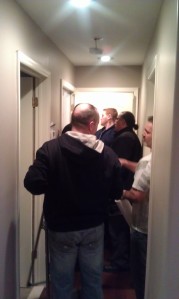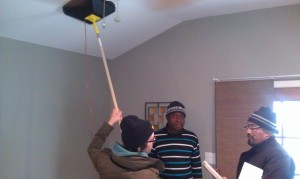I just taught a BPI Introduction to Building Science course last week that included both the information required for both Building Analyst and Envelope Professional. There is an enormous amount of complex information included particularly for someone who may never have been in an attic or framed a house. It’s all new from the second law of thermodynamics to R value to convection and boilers. We are asking them to take in and understand and retain all of that information which has likely been shoveled at them in a week-long course.
On top of that we are working off two different Standards. There is some information that is in the Building Analyst Standard (17 pages long) and some information in the 1200 Standard (47 pages long) (which is still a draft). I have serious doubts that many people will actually read the new standard and refer to Paragraph 7.8.1.12.1.1 to determine an action level for spillage!
And even more confusing is that the trainers have not been informed as to what needs to be taught for the tests, or if the proctors are looking for different things than the trainers think they are training for.
The 1200 Standard has removed the need for “values” – actual numbers for CAZ depressurization and draft (if it’s higher than x it’s good, lower, it’s bad). And in fact draft doesn’t even have to be measured. The standard only indicates if it’s bad if it spills. Yet we are now asking for CO Airfree on some things and not on others and not all test equipment displays CO Airfree so it has to be calculated. And the 1200 Standard says “The draft table is provided by permission of the American Gas Association” although it is referring to a table that is in draft form not to a level of pressure. It is hard to tell what an auditor is supposed to do besides telling the homeowner that their boiler or furnace needs servicing. Do we really need to have auditors buy an expensive combustion analyzer for that one measurement, something they probably don’t understand and can’t do anything about?
And for gas leaks we need a device that actually measures LEL which is not what the Leakator (the common combustible gas leak detector) does now so it is another piece of equipment students will have to buy and proctors will have to have available.
There are various other discrepancies that make these confusing issues a challenge to teach. on top of those there are the various categories: Building Analyst, Energy Auditor and Home Energy Professional. I had students go to the BPI website per my suggestion, and they down-loaded different knowledge lists.
We need an Intro to Building Science Course that one could attend to get an introductory Building Analyst Certification, Building Analyst 1. That should refer to a “Getting Started Standard” that combined the good parts of both the old Standard and the new 1200 Standard. The Getting Started Standard should be no more than four pages long. Maybe it should have a bunch of pictures like the instructions that come with a new computer.
I refuse to teach to a test. I think the students should understand what they are learning and not just memorize numbers and hose positions. But there should be a block of maybe twenty-five items that the beginning participants could be taught that would be clear and simple. Do we really expect them to go to Section 7.8.5, ANSI/BSR Z223.1/NFPA 54, National Fuel Gas Code, Table G-6: CO Thresholds?
Please visit our website at http://www.HeyokaSolutions.com



Preach it brother! I’m going through the same thing trying to update my curriculum. 1200 is 47 pages long and references 18 other standards. Think about how much time you would gave to spend in a home to do all of 1200! It calls out exhaustive testing and data collection that will add hours to jobs making it less profitable.
This is crazy;-)
LikeLike